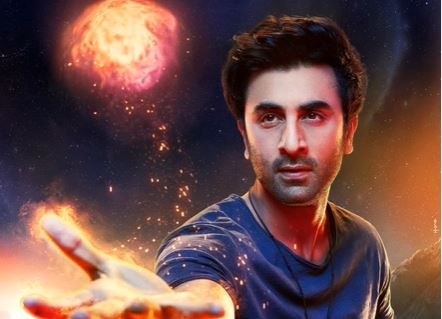Ayan Mukherji’s Brahmastra will hit the theatres on September 9
this year. Starring Bollywood A-listers like Ranbir Kapoor, Alia Bhatt, Amitabh
Bachchan and Nagarjuna Akkineni, the Dharma Production’s film intertwines Hindu
mythology with commercial themes of romance, action-thriller and suspense.
The movie plot
A refreshing change in the Bollywood filmmaking style, the trilogy
focuses on Shiva (played by Ranbir Kapoor), who has an estranged connection
with the element of fire and can harness supernatural powers to awaken
Brahmastra—a celestial weapon that can vanquish all living creations and
destroy the universe. Although he embarks on the journey to acquire the
deadliest weapon and form an allyship with the Gods of five elements, his quest
is filled with obstacles and treacherous traps set by villains.
Shiva must face Junoon (Mouni Roy), the queen of dark forces who
also wants to get hold of the Brahmastra and conquer the universe. The crux of
the plot circumvents around how Shiva thwarts and destroys Junoon’s intentions,
while also learning about the magnanimous responsibilities that come with great
power.
Brahmastra
commercialises Hindu mythology
Keeping the cinematography aside, the film is one of its kind as
it blends modernity and Hindu mythology in a unique way which is relatable to
the millennial audience, unlike its predecessors (such as Bhakta Prahlada
(1967), Babruvahana (1977), Karnan (1964)) which offered mythical stories
either in animated version or in the archaic narration of epics like Mahabharat and
Ramayana.
In ‘Brahmastra Part One: Shiva’, the protagonist is a DJ by
profession who shares on-screen chemistry with Isha (Alia Bhatt), completely
incognizant of his divine abilities. The movie offers romance while portraying
characters who are in sync with the dynamics and trends of the 21st century–
pursuing love interests, partying and celebrating life in general, while also
saving the universe.
The cornerstone of the plot lies in the usage of colloquial dialogues,
complex reflection of internal conflicts, contemporary songs, modern settings
and high visual effects in action scenes which caters to its commercialisation
and makes the movie highly anticipated by its targetted viewers.
Also Read: Brahmastra pre-release promo out, introduces ancient Indian astras | Watch
There is a rising trend of commercialisation of Hindu mythology
and history, including movies like ‘Padmavat’, ‘Raam Leela’, ‘My Friend
Ganesha’, ‘Raavan’ and ‘OMG: Oh My God which have become massive box office hits.
However, these attempts at reinventing mythology and fusing it with fantasy have raised criticisms of distortion of religious beliefs, whitewashing history,
appropriation of culture and hurting religious sentiments of many. This has
sparked debates on censorship of art, the essence of artistic liberty and how the
new generation is becoming alien to their own cultural heritage.
The political
significance
Obeisance to religious sentiments and upholding Hindu culture (which
in its essence is not a homogenous philosophy) has gained huge significance in
the last couple of years. Several movies including Akshay Kumar’s ‘Laxmii Bomb’
and Amir Khan’s ‘Laal Singh Chaddha’ have raised alarms for a boycott in the
Twitterverse allegedly due to hurting Hindu sentiments and ‘portraying a
Muslim in the lead role’ respectively.







